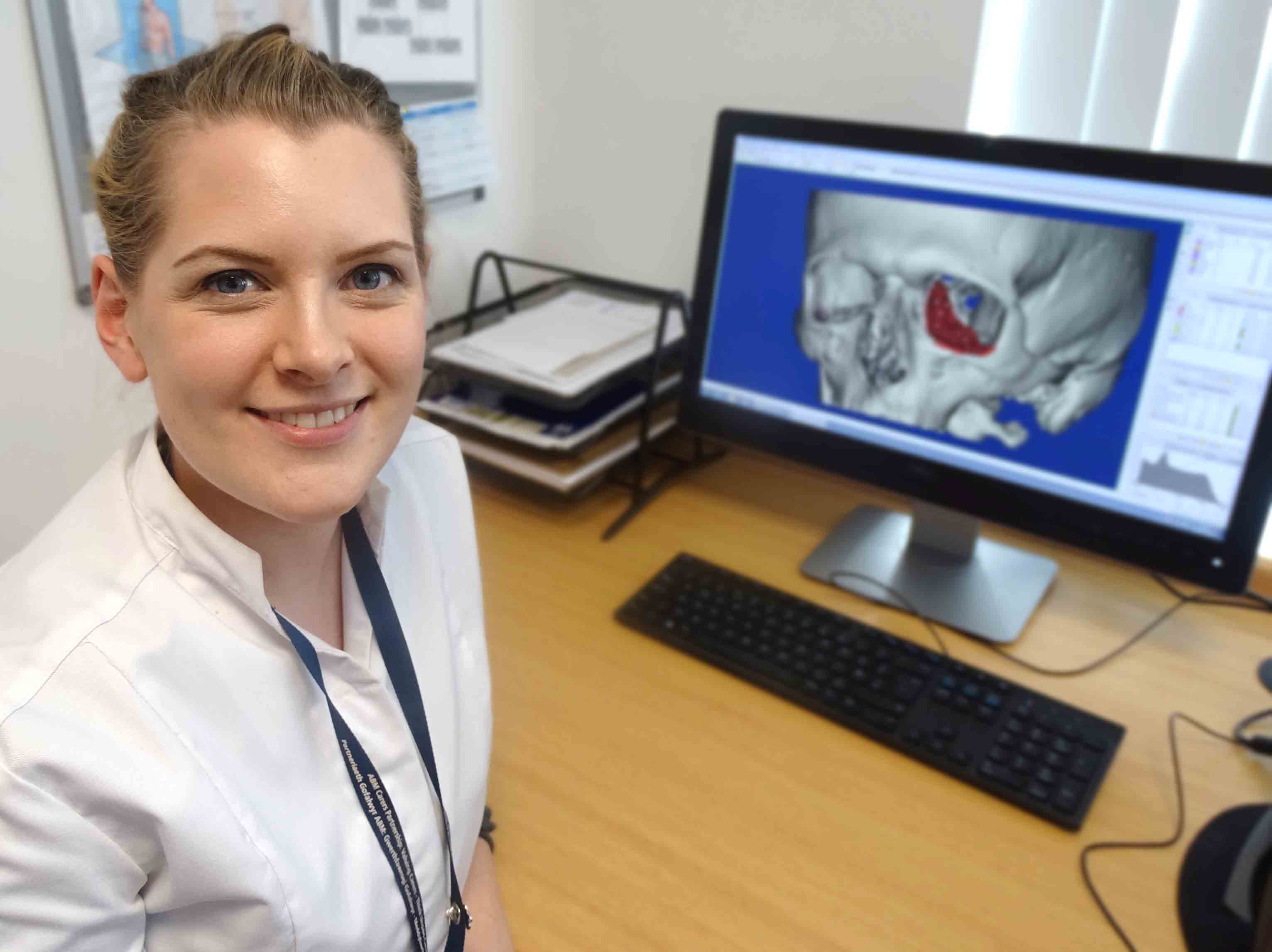The British National Health Service (NHS) has appointed its first ever biomedical 3D technician to create 3D printed models for facial reconstruction surgery.
With a background in forensic reconstruction and 3D design, Heather Goodrum was given the role at Morriston Hospital in Swansea, Wales. Her new job is concerned with fabricating models, guides and implants for maxillofacial surgery. Since her appointment, other British hospitals have contacted Morriston about following suit and creating similar roles of their own.
Morriston Hospital has been at the forefront of advanced 3D technology for a number of years. Back in 2013, the medical center used 3D printing in a drastic reconstruction surgery case.

“Struggling to do the digital work”
Maxillofacial Laboratory Services manager at Morriston Hospital, Peter Llewelyn Evans explains the motivation behind the new role. According to Evans,
… digital 3D planning for head and neck reconstructions has really grown in the last five years or so, but units are struggling to do the digital work because they have not had anyone specifically trained to do it.
To address this, Evans explains the hospital “created a special post as we felt it was something that would continue to grow.” The role of biomedical 3D technician did not formerly exist in the NHS, but now “other large centres around the UK have been in contact about Heather’s role because they want to create a similar post in their units.” The demand for 3D printing is certainly growing within the health service as Open Bionics is set to begin an NHS trial of its 3D printed prosthesis.

Role of biomedical 3D technician
Recently appointed Heather Goodrum describes her new role as biomedical 3D technician,
The surgeons decide how they want to be able to do the surgery and the design side is then down to me and the reconstructive scientists in our team. I’ll design the part required and the team and I sit down together to make any alterations. Once complete it is sent away for 3D printing.
Goodrum’s role is primarily concerned with models for cranial surgeries but has also been involved in the fabrication of many other kinds of implants. As Evans points out, the former theatre design student also has “a Masters degree in forensic reconstruction and she used the same 3D modelling software we use, so we were very fortunate to attract someone with her experience.”
Evans and his team at the hospital are clearly impressed with her work since she was originally enlisted to simply clean up data on CT scans, “but her digital skill has enabled her to do much more.”
Amy Davey, a member of the NHS Reconstructive Prosthetics team and reconstructive scientist at British 3D printing company Renishaw, gave insight into the use of advanced technology within the British health service in her article on the future of 3D printing.
For all the latest 3D printing news, subscribe to the most widely read newsletter in the 3D printing industry, follow us on twitter and like us on Facebook.
Featured image shows Heather Goodrum working on a 3D cranial model. Photo via Abertawe Bro Morgannwg University Health Board.


